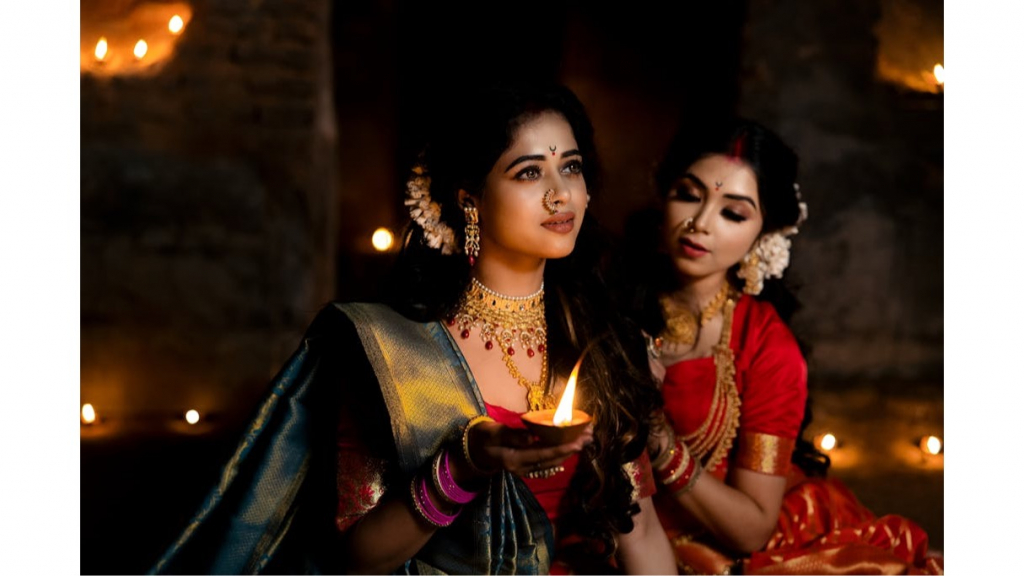The Royal Influence on Traditional Indian Attire
Indian fashion has long been synonymous with grandeur, elegance, and intricate craftsmanship. Much of this influence stems from the wardrobes of India's queens—Maharani fashion has left an indelible mark on traditional Indian attire. From opulent fabrics to intricate embroidery, the regal aesthetics of royal women have shaped sarees, lehengas, and jewelry that continue to be treasured today. Let’s explore how Indian royalty has inspired timeless fashion trends that still reign supreme.
Luxurious Fabrics: The Foundation of Maharani Fashion
Maharani fashion is defined by the use of luxurious fabrics such as:
-
Silk: Preferred in South India, silks like Kanjeevaram and Mysore silk are woven with pure gold and silver threads.
-
Velvet: A royal favorite in Mughal and Rajput courts, often used for winter attire.
-
Brocade: Woven with intricate motifs, brocade was extensively used in Mughal and Awadhi fashion.
-
Chiffon and Georgette: These lightweight fabrics were favored by modern Maharanis like Maharani Gayatri Devi of Jaipur.
Regal Sarees: Draping the Legacy
The saree, a staple in Indian fashion, owes much of its grandeur to royal patronage. Some of the most iconic sarees influenced by Maharanis include:
-
Banarasi Sarees: Woven in Varanasi, these sarees were patronized by Mughal and Rajput queens.
-
Kanjeevaram Sarees: The pride of Tamil Nadu, these silk sarees feature temple motifs and zari work.
-
Paithani Sarees: A Maharashtrian royal favorite, known for its peacock and floral motifs.
-
Chanderi and Maheshwari Sarees: Lightweight yet luxurious, these sarees were adorned by Madhya Pradesh royalty.
The Legacy of the Lehengas: A Maharani’s Favorite
The lehenga choli, synonymous with bridal and festive wear, originated in royal courts. Rajasthani and Mughal queens popularized this outfit with:
-
Zardozi Embroidery: Gold and silver threadwork that adds richness to the ensemble.
-
Gota Patti Work: A specialty of Rajasthan, incorporating fine metallic ribbons.
-
Bandhani Prints: A tie-dye technique embraced by Gujarati and Rajasthani queens.
Jewelry: Adorning Like a Queen
Maharani jewelry was an exquisite mix of tradition and opulence. Some of the most famous jewelry styles include:
-
Polki and Kundan: Originating from Rajasthan, these uncut diamond pieces were worn by Rajput and Mughal queens.
-
Temple Jewelry: South Indian Maharanis adorned themselves with temple jewelry crafted in gold.
-
Nizam Jewelry: Hyderabad’s royal women wore intricately designed pearl and emerald pieces.
-
Choker Necklaces: Inspired by Maharani Gayatri Devi, these remain a favorite among brides.
Maharani Fashion in Different Eras
1. Mughal Era: The Golden Age of Indian Fashion
The Mughal queens introduced Persian influences into Indian fashion. Heavy brocades, shararas, anarkalis, and jewel-toned attires became the norm.
2. Rajputana Elegance: The Grandeur of Rajasthan
Rajasthani Maharanis popularized the lehenga-choli and odhnis (long veils), featuring intricate mirror work, bandhani prints, and gota-patti embroidery.
3. The Modern Maharani: Influence on Contemporary Fashion
Maharani Gayatri Devi of Jaipur revolutionized Indian fashion by introducing pastel chiffon sarees with minimal jewelry—a trend still followed today.
How Maharani Fashion Continues to Inspire Today
Maharani fashion is not just a relic of the past; it continues to influence contemporary trends in multiple ways:
-
Designer Collections: Renowned designers like Sabyasachi, Ritu Kumar, and Manish Malhotra draw inspiration from royal aesthetics.
-
Bridal Trends: Modern bridal wear heavily incorporates Mughal and Rajput-era embroidery and fabrics.
-
Celebrity Fashion: Bollywood actresses often channel Maharani fashion for red carpet events and weddings.
-
Heritage Revival: The handloom industry continues to preserve traditional weaving and embroidery techniques.
Conclusion
Maharani fashion is a testament to India's rich cultural heritage. From opulent sarees to intricately embroidered lehengas and statement jewelry, the influence of Indian royalty is undeniable. Even in the modern era, elements of Maharani fashion continue to inspire contemporary designers, making it a timeless style that exudes grace and grandeur. Whether you are a bride, a fashion enthusiast, or someone who appreciates the elegance of traditional Indian attire, Maharani fashion offers an eternal source of inspiration.




Share this via
Or copy link